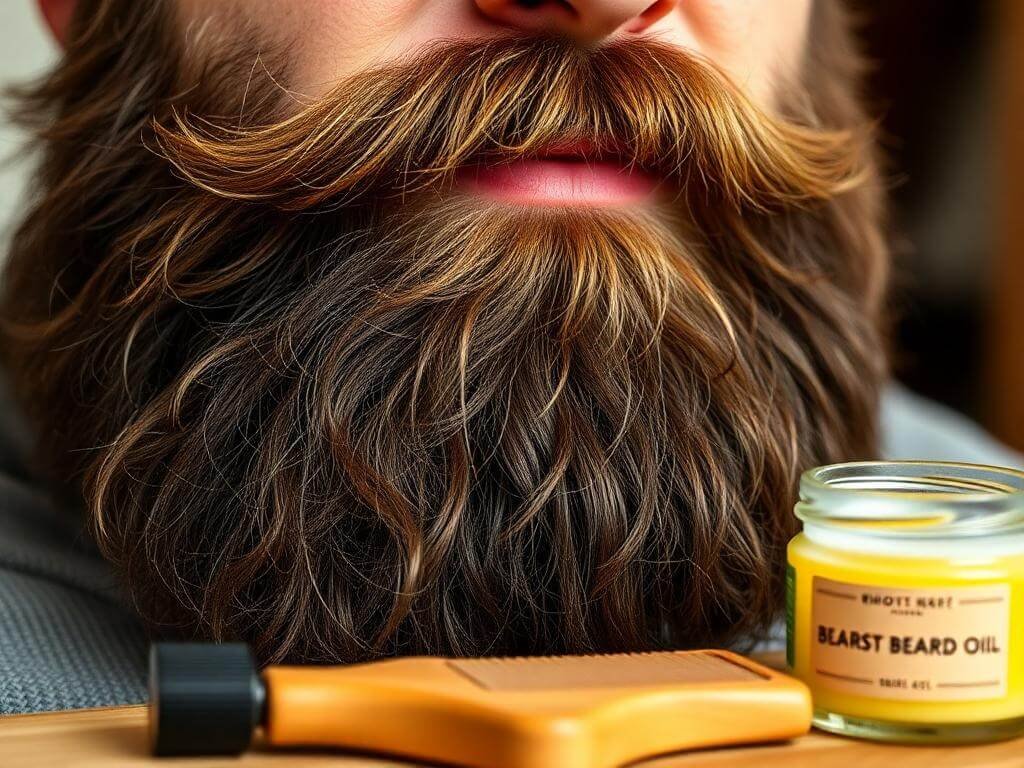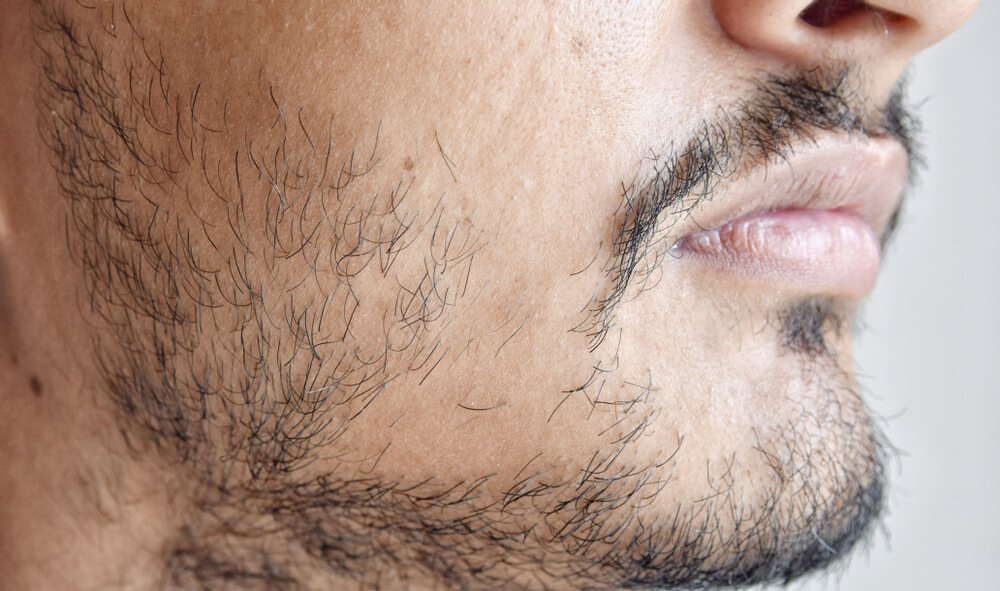Dealing with a patchy beard can be a real downer. You’re trying to grow that majestic mane, but instead, you’re looking in the mirror at something that resembles a connect-the-dots puzzle. It’s frustrating, we get it. For many of us, a beard isn’t just about following trends; it’s a part of our identity, something that makes us feel confident and, well, like a man. But don’t worry, you’re not alone, and more importantly, it’s totally fixable! With the right knowledge and techniques, that patchy beard can transform into the full, glorious facial hair you’ve always wanted. So, let’s figure out how to make that happen!
Understanding Patchy Beards: Why Does It Happen?

First things first, it’s important to understand why some of us end up with patchy beards in the first place. It’s not just random bad luck; there are real reasons behind it. Let’s take a look:
- Genetics: Yep, your family tree plays a big role. If your dad or grandpa had a patchy beard, there’s a good chance you might too. Think of it like inheriting your eye color – it’s just how your genes decided to distribute your facial hair. Some of us are just naturally wired to have thinner or more scattered facial hair growth.
- Hormones: Those pesky hormones, especially testosterone and dihydrotestosterone (DHT), are the VIPs when it comes to beard growth. They’re responsible for how thick and fast your beard grows. If your hormone levels are a bit out of whack or your hair follicles aren’t super sensitive to DHT, you might experience some patchiness.
- Age and Development: For the younger guys, patchy beards are often just part of the process. Your facial hair takes time to mature, and some of us might experience uneven growth in our late teens or early twenties. As you get older, your beard will likely fill out and become more even. So, if you’re still in your early twenties, hang in there and be patient.
- Nutritional Deficiencies: What you eat can seriously impact your beard. If you’re not getting enough of the right vitamins and minerals, your beard might suffer. Things like vitamins A, B, C, and E, along with minerals like zinc and iron are essential for strong, healthy hair. Think of it like feeding your beard from the inside out.
- Lifestyle Factors: Life can get in the way sometimes, and things like stress, smoking, and lack of sleep can mess with your beard growth. Stress can disrupt your hair growth cycle, while smoking restricts blood flow to those hair follicles. Even your sleep habits can play a role because consistently sleeping on one side of your face might affect blood flow and pressure.
- Skin Conditions: Sometimes, the skin beneath your beard is the culprit. Conditions like eczema, psoriasis, seborrheic dermatitis, and fungal infections can interfere with hair follicle health, slowing down or stopping hair growth in certain areas. Specific conditions like alopecia areata (which includes alopecia barbae) and tinea barbae can also cause patchy hair loss.
- Other Factors: There are a few other things that might be causing the issue:
- Traction alopecia from pulling, braiding your beard tightly or twisting on it.
- Psychological conditions like trichotillomania, where you might be unconsciously plucking hairs.
- Damage from over-styling, using harsh chemicals or too much heat.

It might seem like a lot of potential causes, but don’t worry. Knowing the “why” behind your patchy beard is the first step to finding the best solutions.
How to Fix a Patchy Beard: Proven Strategies
Alright, now for the good stuff! Let’s talk about how you can actually improve your patchy beard and achieve that fuller, more even look.
- Embrace Patience and Consistency: First up, you’ve got to be patient. A beard takes time to grow, and many guys give up too early. Resist the urge to trim or shape it too soon. Let it grow for at least three months before you make any big decisions. Sometimes, as your beard gets longer, those patches start to fill in a bit, or at least become less noticeable. So, give your beard a chance.
- Optimize Your Diet and Lifestyle: What you put into your body makes a big difference. Focus on eating a balanced, nutrient-rich diet. Load up on foods that are high in those beard-boosting vitamins and minerals. Think oranges, brazil nuts, raisins, potatoes, kale, and spinach. Also, make sure you’re hydrated, quit smoking (if you do), and get regular exercise for good blood flow and hormone balance. Don’t forget to get enough rest and find ways to reduce stress.
- Use Quality Beard Care Products: Investing in the right products can make a huge difference. Beard oils and balms can moisturize and condition your facial hair and the skin beneath it, which helps create a healthy environment for growth. Look for products with natural ingredients like jojoba oil, argan oil, and shea butter. Use a beard wash specifically formulated for facial hair, not just your regular shampoo. A beard brush can help exfoliate your skin and promote blood flow. Also, consider using a beard & scruff cream to help with beard itch and promote growth.

- Consider Growth Supplements: If you’re looking for an extra boost, supplements might help. Some guys find that biotin and collagen can support hair growth. But remember, it’s always a good idea to chat with your doctor before starting any new supplement.
- Master the Art of Grooming and Styling: While you’re waiting for your beard to fill in, grooming and styling can make a big difference. Use a good beard trimmer to keep your beard at a uniform length and shape. Blend those patchy areas with the fuller sections to create a more balanced look. Try out different beard styles that can minimize the appearance of patchiness, like a chin strap, goatee, 5 o’clock shadow, or stubble. Regular trimming can keep things looking neat and polished.
- Advanced Treatments and Medical Interventions: If nothing else works, consider talking to a professional. A trichologist or dermatologist can diagnose underlying skin issues or recommend treatments like minoxidil or steroid creams. They might also suggest therapies like derma rolling (microneedling). If all else fails, a beard transplant might be an option.
- Train your beard: If your beard grows in different directions, try combing or brushing it downwards several times a day, holding it down after each stroke.
Beard Maintenance: Keeping Your Beard in Top Form
Okay, so you’ve got your beard looking fuller and more even. Now what? It’s time to start thinking about regular maintenance.
- Establish a Consistent Grooming Routine: Just like your hair, your beard needs regular care. Make sure you’re washing and conditioning your beard regularly with a gentle beard shampoo and conditioner.
- Brush and Comb Daily: This helps distribute your natural oils and promotes blood flow.
- Hydrate and Nourish: Apply beard oil daily to moisturize and soften your facial hair.
- Strategic Trimming: Keep your beard shaped up with regular trims to encourage even growth.
- Condition for Victory: Use a good beard conditioner to keep your beard soft and manageable.
- Boost Blood Flow: Gently exfoliating and massaging your skin can help to boost circulation to the hair follicles.
- Embrace the Right Style: Choose a beard style that complements your face shape and growth pattern.
- Deep Conditioning: Treat your beard to a deep conditioning treatment once a week to keep it hydrated.
- Keep It Clean: Regular washing with a beard shampoo keeps your beard smelling fresh and free of dirt and grime.
Managing Common Beard Growth Issues
Even with all the right steps, you might run into a few other common beard issues. Here’s how to deal with them:
- Cowlicks and Whorls: These are those annoying areas where your hair grows in a circular pattern. It’s just how your hair follicles are angled, thanks to genetics. You’ll have to work with them, using styling products to tame those areas.
- Uneven Beard Growth: This is when some parts of your beard grow faster than others. You can tackle this by using a beard trimmer to keep your beard at a uniform length.
- Ingrown Hairs and Infections: These can happen when hairs curl back into the skin or bacteria gets in. Wash your beard with a gentle cleanser and if it continues to be a problem, talk to a dermatologist.
Debunking Common Myths About Patchy Beards
Let’s clear up a couple of common myths that are floating around:
- Shaving and Thickness: Shaving your beard does not make it grow back thicker. It just seems that way because the hair is cut blunt.
- Testosterone Levels: A patchy beard doesn’t necessarily mean you have low testosterone. Beard length and fullness don’t accurately predict a man’s testosterone levels. Other hormonal imbalances like those produced by thyroid disorders can cause thinning.
When to Seek Professional Help
Sometimes, you need a pro’s opinion. If you have:
- Persistent Patchiness or Bald Spots: Consult a dermatologist or hair restoration specialist.
- Severe Growth Changes: Talk to your doctor to rule out any health conditions.
- Ingrown hairs or infections: If these are ongoing issues, see a dermatologist.
Alright, guys, there you have it – a complete guide to conquering the patchy beard! It might seem like a lot of information, but the key thing to remember is that a fuller beard is totally achievable with patience and the right approach. Embrace your unique beard journey, and don’t be afraid to try different things until you find what works best for you.
Now, go out there, rock that beard with confidence, and don’t forget to share your experiences or ask any questions you have! Read this if you intend to know more.
Our efforts succeeded if you found value in what we just discussed. Visit our blog page or Men’s Grooming section for more exciting content.





Leave a Reply